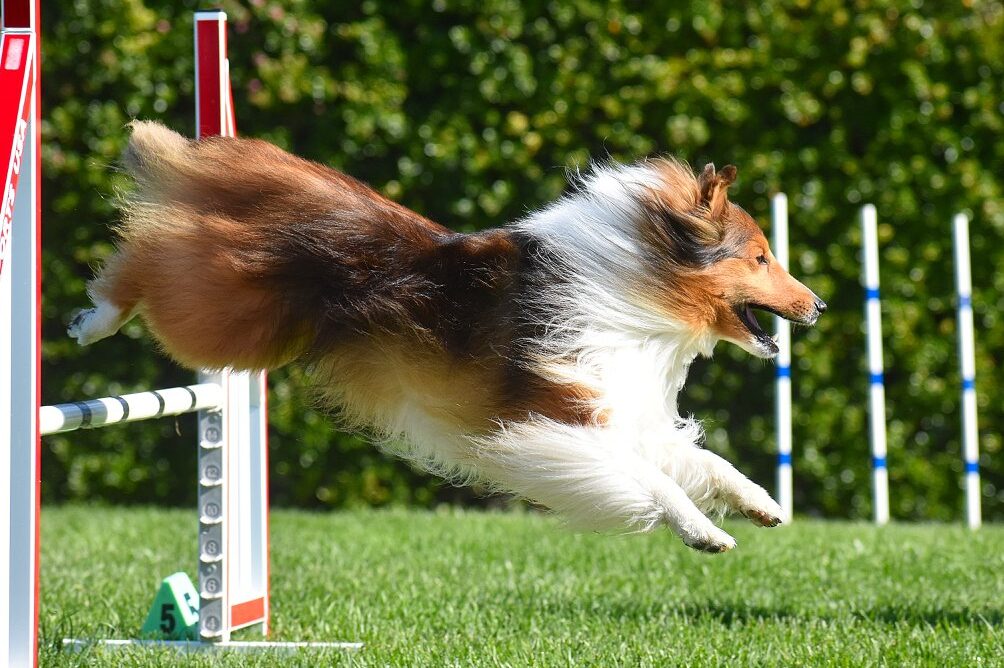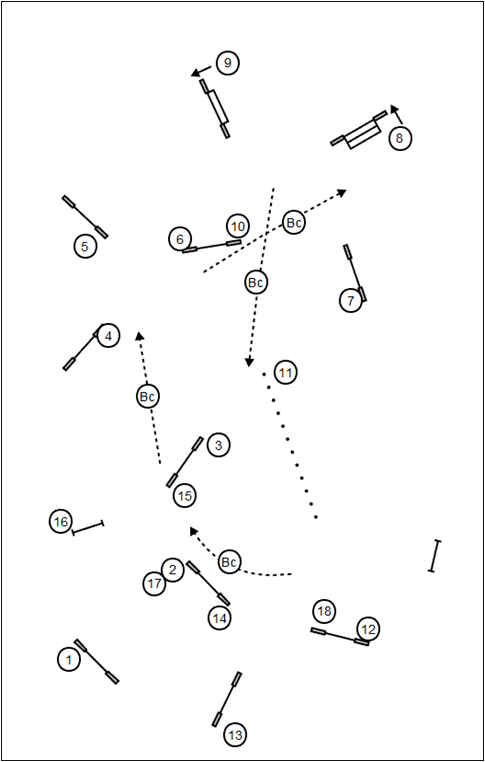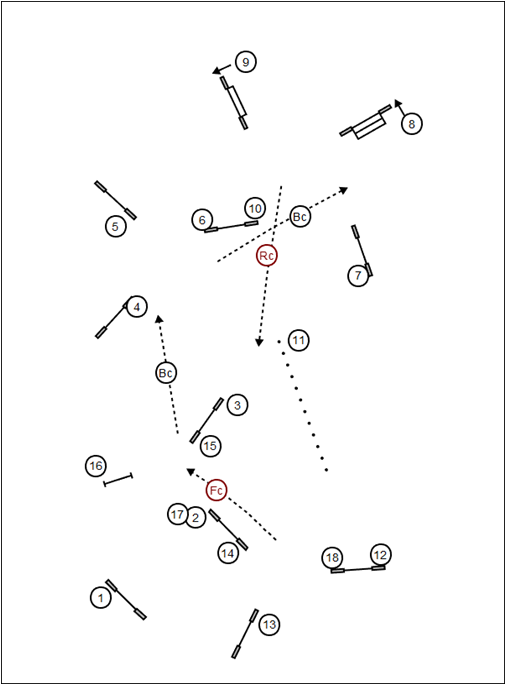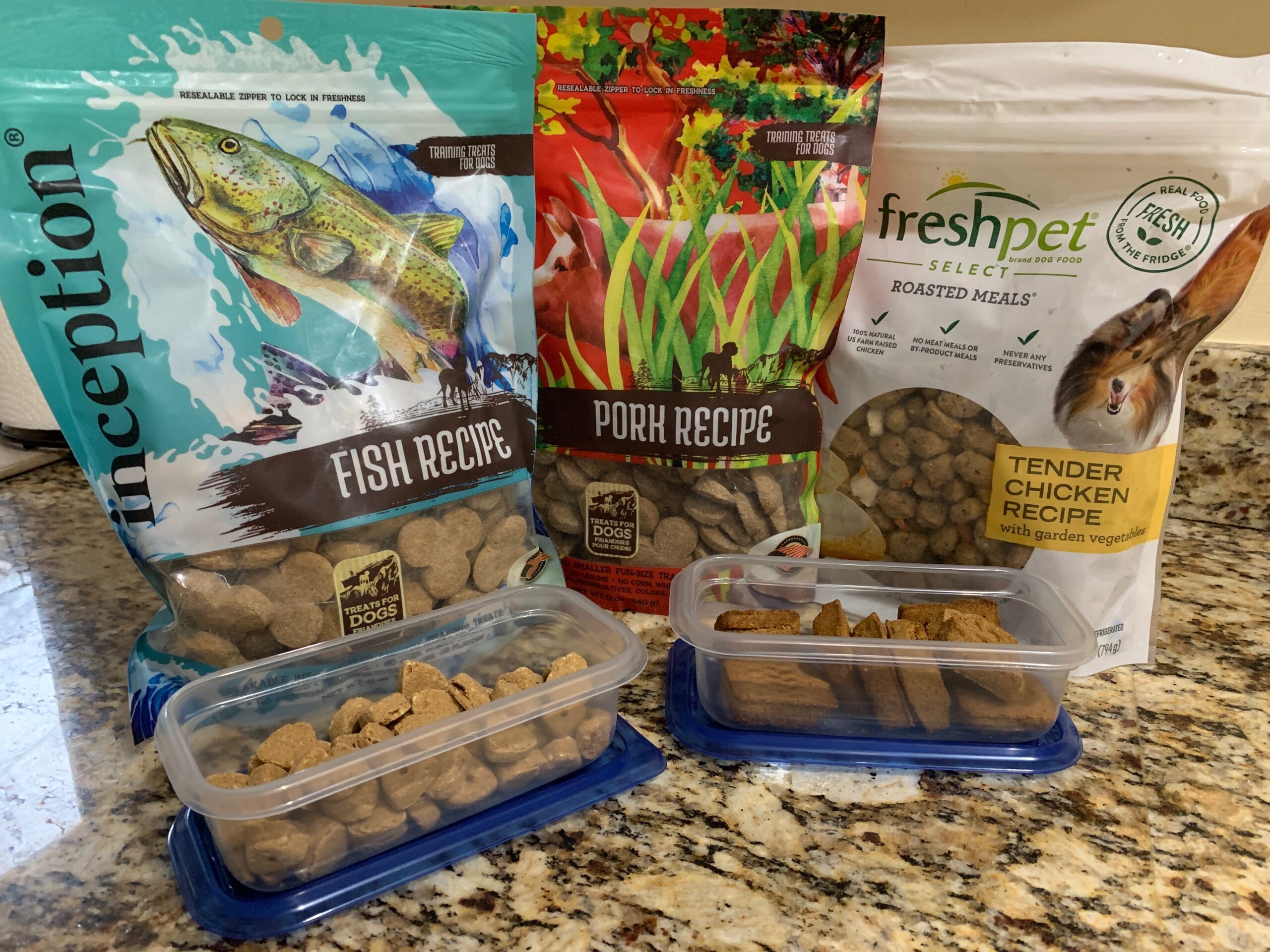
This past Saturday, Zabu and I ran an AKC Ex/Master Jumpers course judged and designed by Mark Upshaw. We were outdoors on grass, which was soggy from two days of continuous rain. The course was built a bit differently than the map due to footing which also had a few dips and inclines. It was, however, a lovely course with lots of handling options and big spaces between jumps.
Throughout this article, I’ll be breaking down how I analyzed my handling choices before and after my run on this course! I always start by identifying my goal for the event and our current training issues, we call these The Magic 5. Then, I can decide on handling in my Pre-Run Analysis and review our performance with a Post-Run Analysis.
In our methodology, local trails are an extension of training, not the end goal; so I go into every trial looking for training opportunities. Zabu’s “Magic 5” were in my mind as I reviewed each course map. Her primary training issues this month are (1) lacking consistency on her seesaw performance from training to trialing, (2) understanding blind crosses and (3) tighter wraps with me in different positions. For a masters level AKC course, I was primarily looking to test and use some of our blind cross training.
Pre-Run Analysis
My walk-thru process is…
1 – Walk the Dog’s Path
This let’s me look for soft spots, dips or other obstructions on my dog’s path I can see potential off courses from the dog’s perspective, and this will help me memorize my handling plan later on.
2 – Consider handling options
Do I use mostly Rear Crosses (RC) which worked well for the 12″ dogs OR do I use mostly Blind Crosses (BC) which is what Zabu has been training the past month?
I chose BCs – though the riskier choice – it is what Zabu has been training.
3 – Plan Out Handling & Cues
Now, I can decide on the specifics of my cues and walk my handling plan for entire course. This means plotting out distances, adding verbal cues for support and imagining the timing of my crosses.
The Plan
Send “Out!” to jump 2. Run ahead to BC between jumps 3-4. Send “Out!” to jump 5, then run ahead to BC between jumps 6-7. Send “Out!” to jump 9, and BC between jump 10 and the weave poles. Send “Out!” to jump 13. Run ahead for BC between jumps 14-15.

5 – Film My Run!
Find friend to video run. I am hoping to see how my current training criteria holds up in a competition. I definitely want our run on film to review both my performance and Zabu’s.
Post Run Review
My post-run analysis is to look for miscommunication between Zabu & I and, at each point, decide whether the problem occurred due to my “plan” or the “performance”. Not only do I think back on how the run felt, I watch my film to analyze our teamwork throughout the run.
Zabu – Video of Course Run
The Plan In Review
The send “Out!” to jump 2 worked well, I got ahead to my BC easily. The BC between jumps 3-4 didn’t work; the plan felt good, but Zabu did not connect with me on the new side. Due to this bobble, we skipped our send “Out!” to jump 5 and then the BC between jumps 6-7. However, we got back on the plan by jump 9 for our Send “Out!”. The BC between jump 10 and the weave poles worked, but created too much speed for her weave entry. With Zabu being young, a rear cross may have given her more time to see and collect for her weave entry. I sent “Out!” to jump 13, but I was late on the execution for the BC between jumps 14-15. On second thought, a Front Cross (FC) might have worked better to set up the turn to the end line.

My take-aways for future training and trialing:
1 – On film, it looks like Zabu is chasing my right foot/leg for the first BC. This is a “game” we play; to fix this I need to stop letting her tug on my pants/shoes.
2 – I need to remember that with more trial experience she has picked up considerable speed so a FC or RC will be better choices to control lines where she needs a collection stride.
3 – On video, I obviously slow up at jump 18. It did not affect her run, but it’s a bad habit of mine!
With this review I not only understand why faults may have occurred, I also have actionable solutions for future handling plans. I can continue working on our main training issues, while being more conscious of how to best support Zabu’s performance on course.


